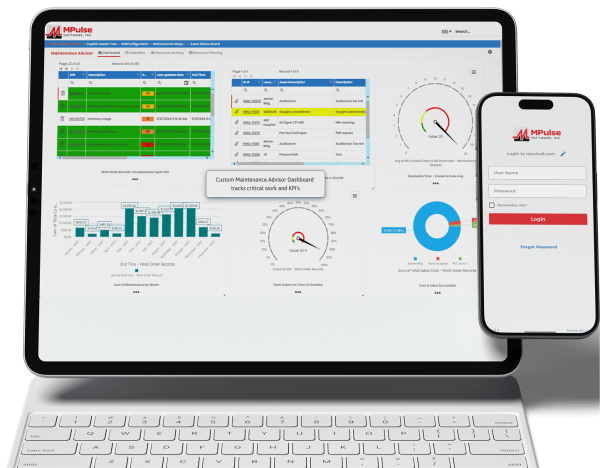When you implement CMMS software, your IT department will provide technical support at some point. Even hosted/cloud solutions require access through your organization’s network. That’s IT’s domain.
So, it’s important that you understand your IT department’s needs—and their concerns—to streamline the CMMS buying and implementation process.
Table of Contents
Strategy #1: Loop IT in Early
We recommend involving your IT stakeholders in the buying process early, even before you start researching vendors. That starts with a simple conversation. You need to solve a problem. You’re looking for solutions. IT has some of the answers.
Consider this first conversation a “fact finding” mission. You want to understand IT’s concerns and the parameters they have to work with. Ask questions like…
- How will IT be involved in the project as a stakeholder?
- How will CMMS affect the IT department in terms of the management of the software?
- Is it likely to affect the IT team’s daily workload positively or negatively?
- How might this software threaten someone’s job, work performance, or domain of responsibility?
- Is it possible that the IT team might have emotional reasons to oppose a change? What could they be?
Strategy #2: Outline Technical Specifications
As stakeholders in this project, IT will have questions for you too. They probably don’t care about how much software costs, or even how much it will improve company performance. They’re much more likely to ask questions like…
- How will it impact my IT infrastructure and to what extent?
- Will I be required to provide technical and usability support?
As a result, IT will have technical specifications that you need to know. Remember, they need your new CMMS software to work within their IT system, which includes platforms, networks, firewalls, other software, and much more.
The biggest issue for the IT department will be hosting. You don’t need to understand all the details, but a document outlining the hosting requirements from your IT team will go a long way when it’s time to talk to vendors about their CMMS solutions.
Strategy #3: Find the Right Hosting Option
With the information you’ve gathered from #1 and #2, you can now look at your options. Start with hosting. When you’re researching CMMS, you’ll find vendors typically offer two different deployment options: cloud-based or on-premise software.
Cloud-based CMMS software (sometimes called web-based CMMS software) is hosted by the vendor and accessible via any device with an Internet connection. On-premise software (sometimes called client-server software) requires you to host the software on your own server and use your own network and hardware.
Your IT team will have valid reasons for going with an on-premise or a cloud-based solution. Knowing what they need will help you stay on the right course towards getting your software.
Strategy #4: Determine the Benefits to IT
CMMS software offers benefits to the IT team too, so it’s important to explain these to them once you start narrowing down your software choices.
The vendor can help you with this process. For example, common CMMS benefits for the IT department include…
- Improved web-based and app-based user interfaces that mimic popular personal-use applications can minimize the learning curve on hardware and software. That means fewer support calls to the IT team when you need help.
- Modern CMMS software makes tasks like adding a new user or expanding reporting capabilities easy, so you need less support from your IT team to keep up in a fast-changing environment.
- If your IT team prefers cloud-based CMMS, these applications are located elsewhere. So, maintenance operations no longer need to enlist IT support to set up and maintain technology infrastructure. Also, many organizations have discovered they spend less on hardware in the office with cloud-based software, particularly on PCs and internal servers.
- Your vendor may offer support options that remove some of the burden from IT teams. These options may include automated updates, security features, real-time data backups, etc.
- Inventory management software features can help your IT department with improved tracking, stocking, ordering, and inventory processes. If your IT department supports your team with any of these functions now, CMMS will make their jobs a lot easier too.
Strategy #5: Share Concerns with Vendors
Don’t hesitate to voice your IT team’s needs to sales reps when shopping for software. Most will be glad to arm you with all the information you need to fend off any IT concerns. They’ll likely also be happy to speak directly with your IT manager, if that’s a better approach.
To win over your stakeholders in the IT department, you’ll need to reassure them that the CMMS solution you’ll choose is designed to integrate seamlessly with existing infrastructure and won’t place undue demands on their network. They also need to know that your vendor has excellent user support, current technology, and rock-solid security features.
Maximizing your CMMS investment means ensuring you’re getting software that’s going to work for the long term. That’s why it’s important to engage with stakeholders throughout the process.
Have questions? We’re here to help. Contact us.
[related-content]






